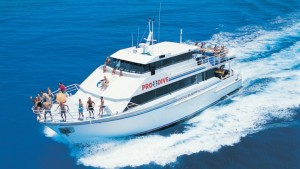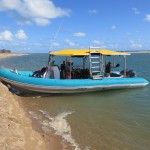Working on a liveaboard is probably a dream job for most Dive Instructors, being out on the ocean hanging from the side of the boat while you give your ‘dive talk’ for the next dive site. However, what are the realities of working on a liveaboard? Well, the kind person you are will determine whether working on a liveaboard is for you or not.
We’ve made a pros and cons list of some of the major factors to help you make your decision.
As a PADI Dive Instuctor a liveaboard can be a great place to teach more PADI courses. With several days to play with you can be teaching open water, adventure dives and even the odd dive master or two.
Divers on liveaboards tend to be more experienced and in terms of proportions you’ll have more divers than non-divers.
Liveaboard boats can travel further than dayboats and get to visit dive sites that can be relatively secluded and are less frequented by larger groups.
Possibly the best reason for working on a liveaboard is the free food. The food is always good if not fantastic and as long as your not drinking too many beers on the boat your going to be making some real savings.
Cons
Working on a liveaboard won’t be that comfortable. You will be sharing a small cabin with a work mate and have to finish the trip before getting any privacy.
You’re working non-stop! From basic maintanence of the boat to scrubbing the decks and filling up cylinders. Keeping your clients happy and keeping up a professional appearance throughout the trip is also a must.
What about sociability?
Depending on whether you like to get to know your dive clients or not, a liveaboard will give you several days getting to know them. This is great for networking, getting awesome stories of other dive adventures and having real conversations in comparison to chit-chat about the weather. On the flip side, some of your ‘esteemed’ clients might not be your cup of tea and then you”re stuck with them for several days.



